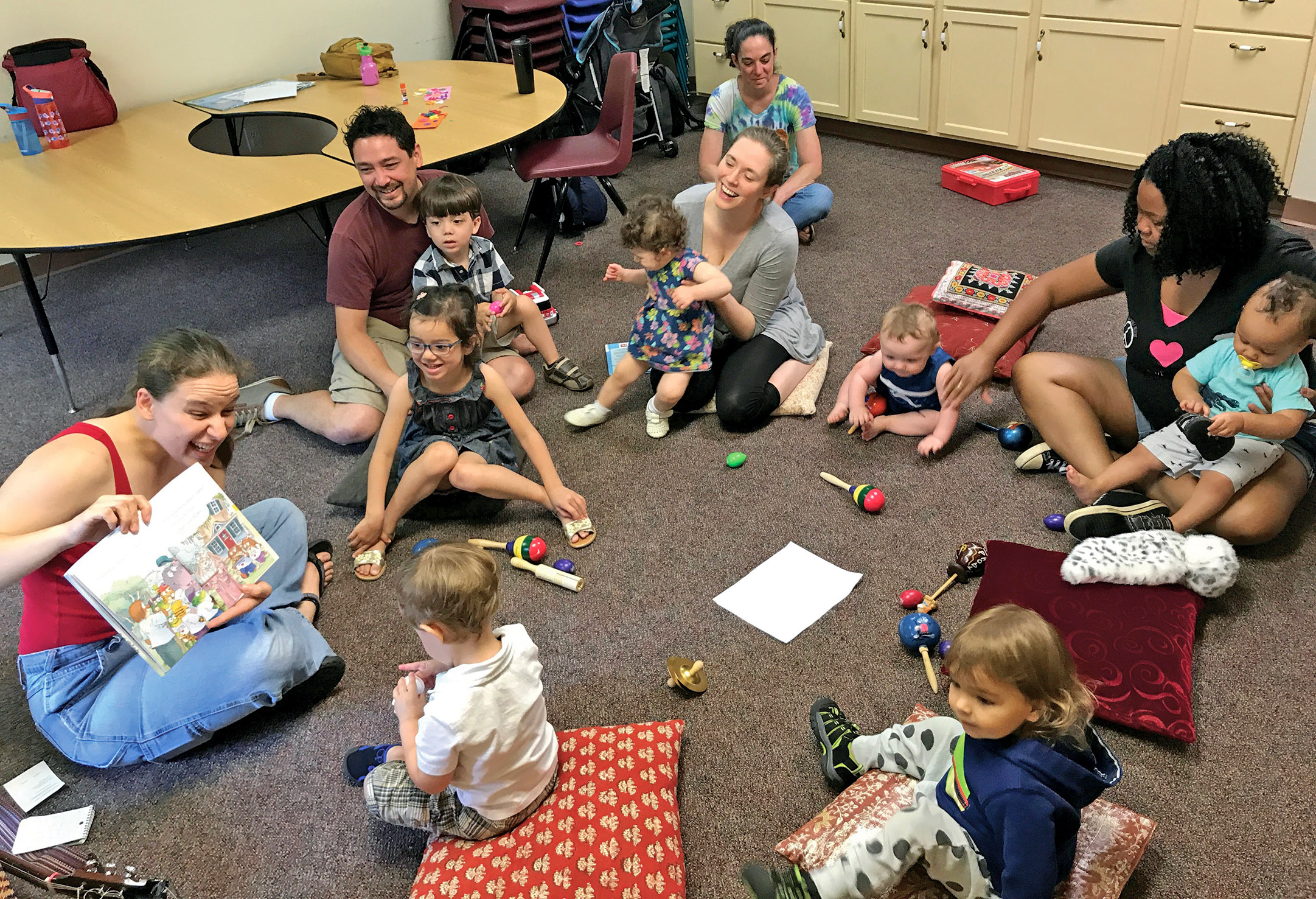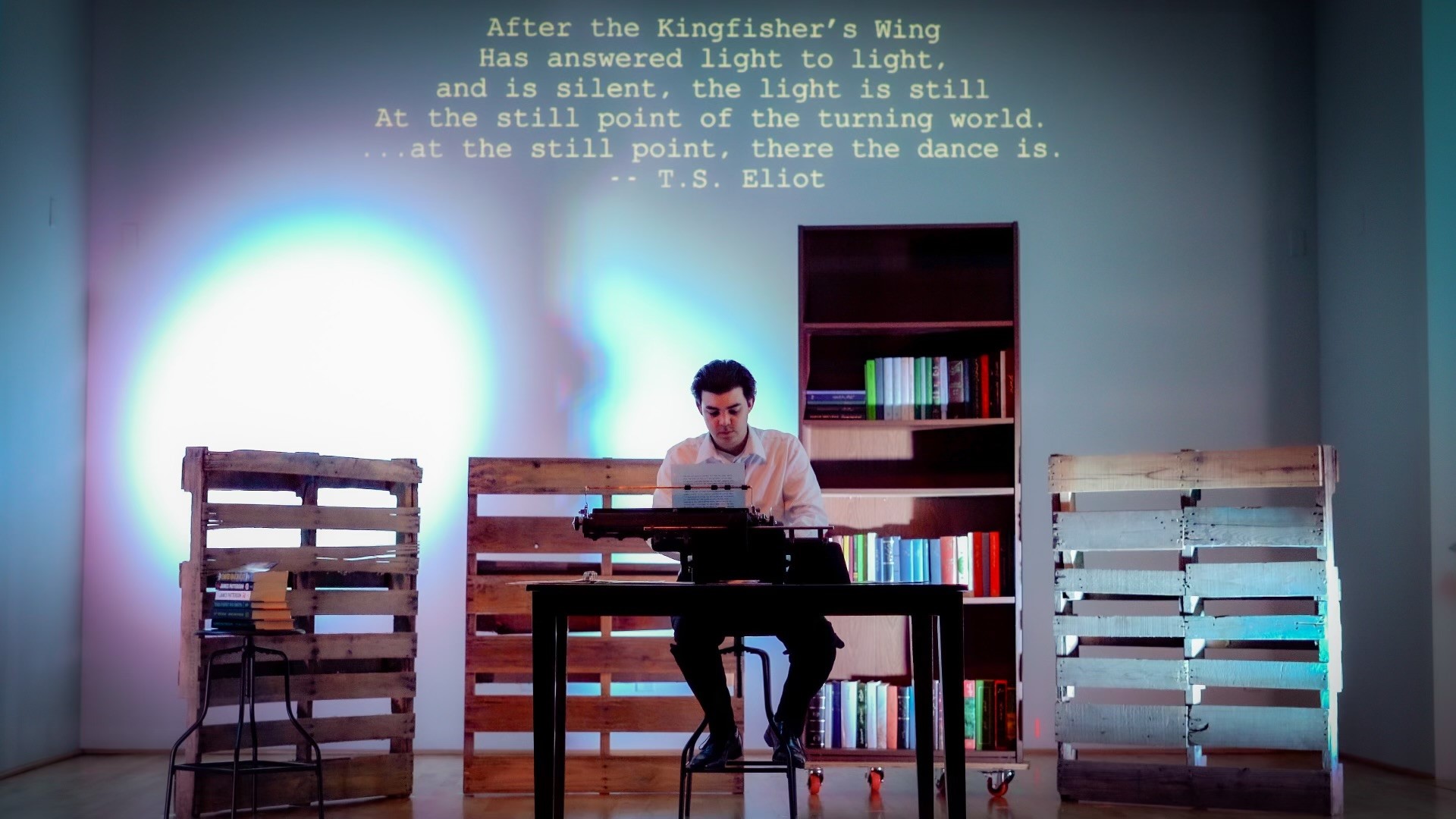
12 things I learned teaching a children’s class

‘Inheriting’ a gathering for young kids, Illinois mother finds out what happens when she reaches out and makes friends
Editor’s note: Among the community-building activities Baha’is strive to initiate in neighborhoods are classes for the spiritual education of children. Making these classes sustainable requires forging a relationship with parents — and, as this story shows, often a great deal of persistence as well.
By Cora Hays
I inherited a Baha’i-initiated children’s class when the former teachers moved out of town. The class was already scheduled weekly at the Baha’i center in Urbana, Illinois.
The class was for children under 4 years old and their parents or caregivers. It was advertised weekly via a local new-moms Facebook group, email and personal invitations to friends and neighbors.
In the past six months a few people had come once or twice, but often no one came. Essentially, it was the structure and skeleton of a children’s class.

Week 1:
Friday rolled around and off I went to the Baha’i center, with guitar, drum, storybooks, a list of virtues, rhythm instruments, and toddler all squashed neatly in our little car.
It took me three trips to get everything in the door of the center. The door locks took a good five minutes of juggling, jiggling, and key dropping to open. The toddler melted down … and no one came.
But this is a success story, right?
Week 2:
I made a banner image with the class name on it to use for the weekly Facebook invitations. Then, I posted the usual announcement with an added clause: This week’s virtue is KINDNESS!
I planned a lesson around the virtue. It consisted of two books and five songs, and that was it.
On Friday, after my toddler’s usual meltdown, a quick prayer and a hug (my husband is a five-star encourager), off the toddler and I went to the Baha’i center.
This time two families came: Both new to the class, both a little hesitant, but friendly and eager. I greeted them enthusiastically and settled in to start the class.
We sang a song, talked about how we practice kindness (e.g. giving hugs, listening to each other, sharing, etc.), then enjoyed more songs and books.
The parents got into it – sharing rhythm instruments with their little ones, clapping along, and (with a little encouragement) making funny animal noises along with the stories.
The little ones wandered a bit, engaged as they wanted to, and enjoyed the music. At the end of class we picked a virtue for next week: LOVE.
Week 3, Challenge Round:
I was encouraged by the positive response to the virtues theme and set out for the center the next week armed with books and songs about love.
One of the parents from the previous week returned with child. Then in walked another new mother and little one.
This was great! The new mom introduced herself … in sign language. Awesome! I know a little sign and can finger spell, so I introduced myself and fumbled my way through introductions to the others in the room.
Then I panicked. The reality finally dawned that here I was, standing with a guitar in hand, knowing a handful of words in sign, wondering how I could possibly make this class engaging and welcoming to a mother who was deaf.
It turned out she was the key to the success of the class. This courageous, contagiously positive mother jumped in with both feet and made it work.
As the weeks went by, she taught us signs for many of the songs that provided an opportunity for developmental growth for the little ones and got the parents laughing as they struggled to remember what to do with their hands.
The challenge of in-depth communication became a collaborative, unifying effort. As our numbers grew, some parents started bringing laptops or tablets to converse more efficiently.
The result was an emergent culture of learning and friendship among all the families involved. And even though my family recently moved to Saint Paul, Minnesota, the class goes on under another teacher.
Here are some of the things I learned from this process. I hope you find them helpful!
- Be genuinely friendly to everyone who comes. If veritable friendships aren’t formed among the parents, the class tends to languish and be a LOT of work for the teacher.
- Be sustainable. Set a regular schedule you can keep and stick with it for at least three months before changing it up.
- Expand the circle of friends. Find out where the new parents are talking (on local social media groups or in person) and put that class invitation out there.
- Define the space. Use small pillows or carpet squares in a circle to designate a space for the class. That helps little ones stay focused. They also enjoy helping set up the room for class and cleaning up afterwards. That gives them ownership.
- Use music. Few things hold the attention of little ones better than music. Live music is best. Even if you’re not a “musician,” use well-known songs and encourage the class to join in and sing with you.
- Include motions or signs. Movement encourages engagement in the songs and assists with development for pre-verbal little ones.
- Memorize together. Challenge the group to memorize short passages. This incorporates the Writings naturally into the classes and little ones really enjoy it.
- Keep stories short. The Little Blue Truck by Alice Schertle is about the right length for a class that includes ages infant to 2 years old.
- Expect roaming. Don’t worry or even hesitate if little ones get up and wander around during class. As their attention returns, so will they.
- Ask ALL the parents to assist. Once a format is established, asking the parents for help can create a strong bond of joyful collaboration in the group.
- Co-teach and accompany. Find a friend to do this with you. A second parent who is willing to attend each time and potentially fill in to lead the class when you can’t be there for a week is invaluable.
- Invite the elders. A teacher does not make a successful children’s class go in isolation. Some of the most valuable help I received with my class was from the elders and retired friends who came each week to help hold babies, redirect toddlers, sing along, and visit with conversation-starved parents.





